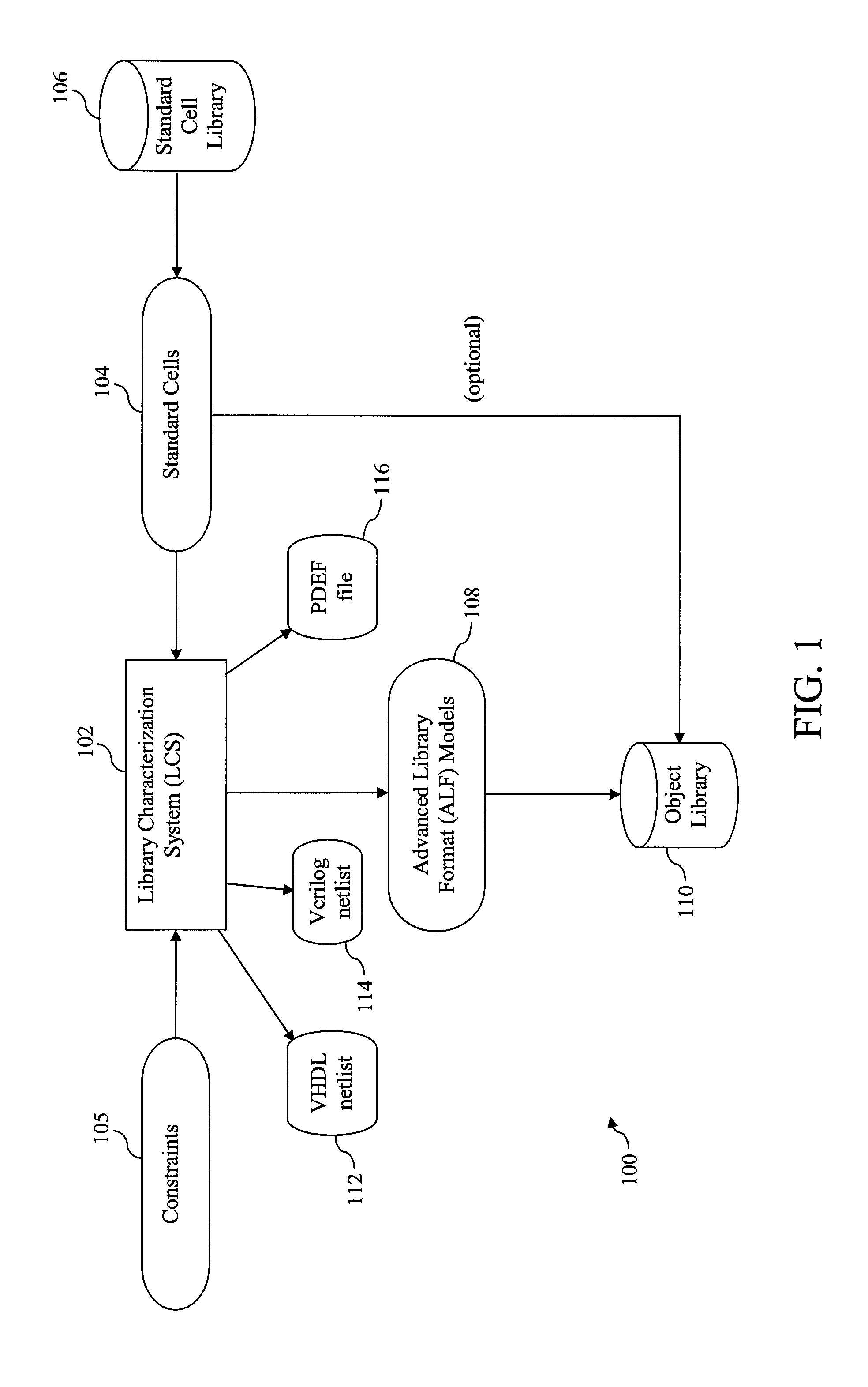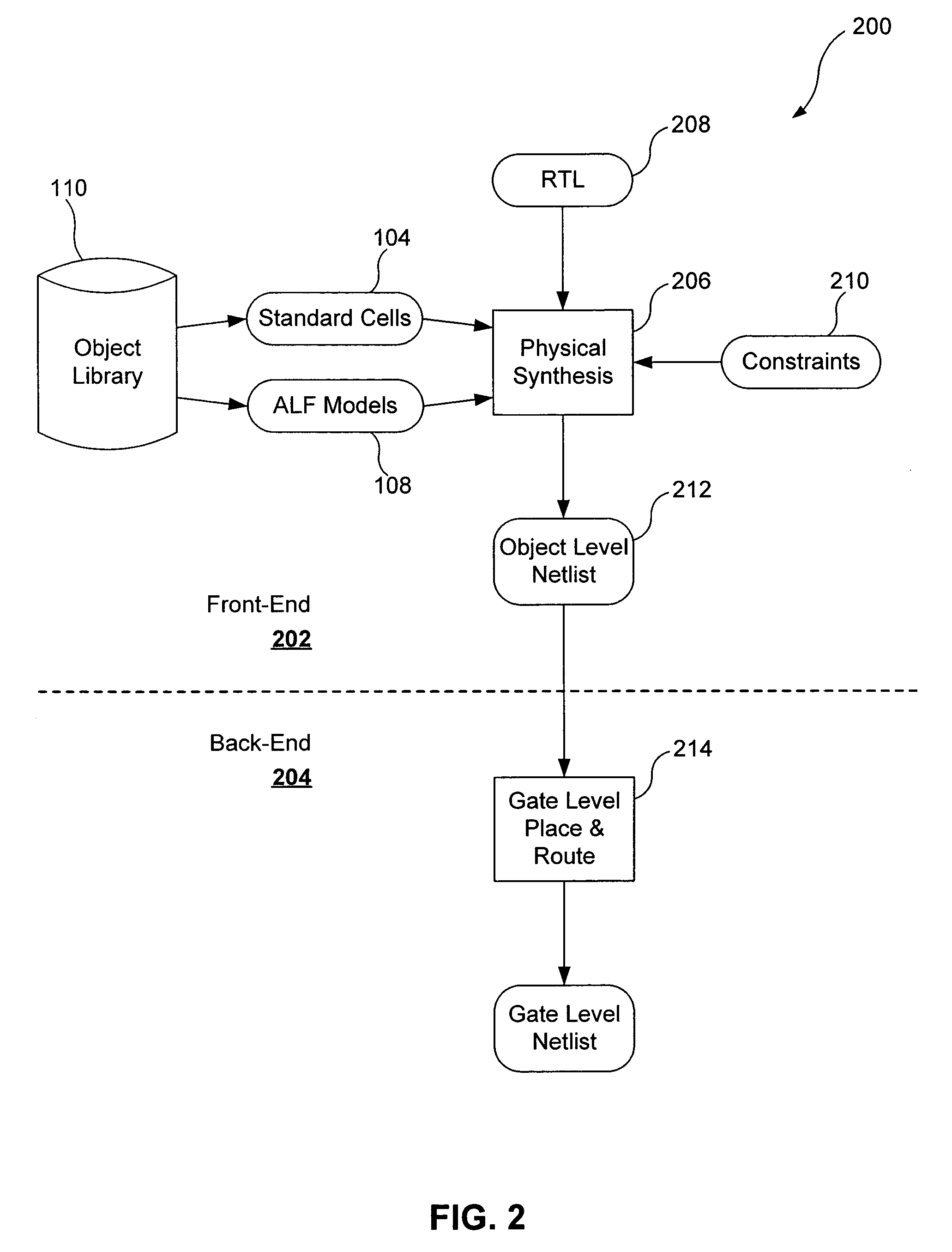Methods and systems for mixed-mode physical synthesis in electronic design automation
a technology of electronic design automation and mixed-mode physical synthesis, applied in the field of electronic design automation, can solve the problems of consuming substantial computational resources and eda processes that are extremely complex, and achieve the effect of reducing the number of interconnections
- Summary
- Abstract
- Description
- Claims
- Application Information
AI Technical Summary
Benefits of technology
Problems solved by technology
Method used
Image
Examples
example implementation
B. Example Implementation of Floorplanning and Placement During Physical Synthesis
[0088]FIG. 4 is a flowchart of an example process 400 for clustering, floorplanning, and placing objects, including logic objects, during front-end physical synthesis.
[0089]FIG. 3 is an example illustration of m objects 300 representative of RTL 208, where m is an integer. In a typical design layout, there are between hundreds and thousands of m objects 300. Optionally, the m objects 300, or a portion of the m objects 300, include logic objects that include detailed physical information, as described above.
[0090]The example process 400 is described below with respect to the m objects 300. The example process 400 is not, however, limited to the m objects 300. Based on the description herein, one skilled in the relevant art(s) will understand that the process 400 can be implemented with other objects.
[0091]In order to place the m objects 300 in a design layout, the m objects 300 are analyzed. If there ex...
PUM
 Login to View More
Login to View More Abstract
Description
Claims
Application Information
 Login to View More
Login to View More - R&D
- Intellectual Property
- Life Sciences
- Materials
- Tech Scout
- Unparalleled Data Quality
- Higher Quality Content
- 60% Fewer Hallucinations
Browse by: Latest US Patents, China's latest patents, Technical Efficacy Thesaurus, Application Domain, Technology Topic, Popular Technical Reports.
© 2025 PatSnap. All rights reserved.Legal|Privacy policy|Modern Slavery Act Transparency Statement|Sitemap|About US| Contact US: help@patsnap.com



